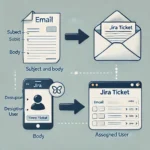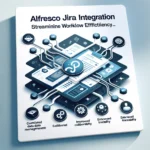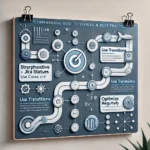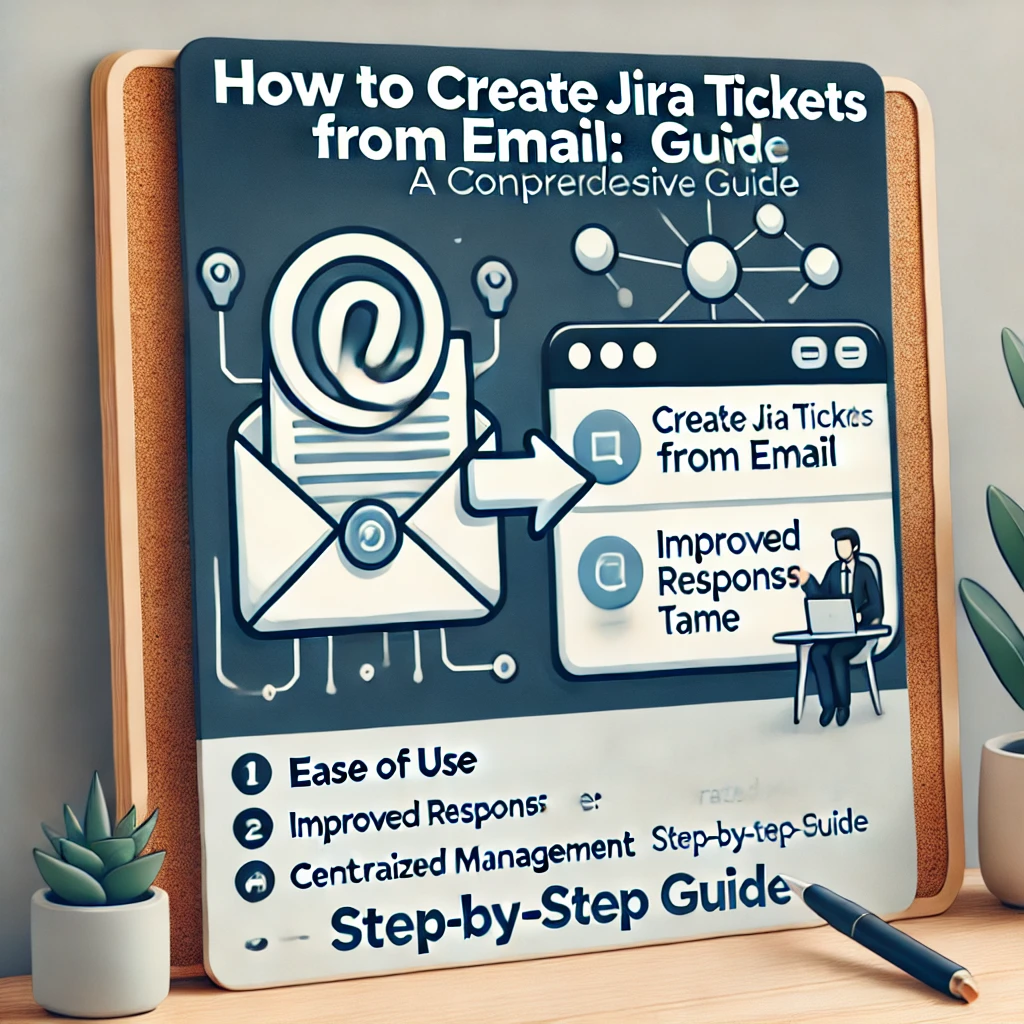How to Create Jira Tickets from Email: A Comprehensive Guide
Introduction
Managing tasks efficiently is crucial for any team, especially when remote or on-the-go. With Jira’s email-to-ticket functionality, users can create issues directly from email without needing to log into the Jira interface. This feature simplifies task tracking and enhances communication, ensuring that no issues go unnoticed. In this guide, we’ll walk you through the setup process, outline the key benefits, and show you common use cases for different teams.
Benefits of Email-to-Ticket Automation
Implementing Jira’s email-to-ticket feature offers several advantages that can streamline your workflow:
- Ease of Use
Team members can create a Jira ticket simply by sending an email. This reduces the need for logging into Jira, especially useful for non-technical team members or those working remotely. - Improved Response Time
Issues can be reported instantly. This ensures that bugs, tasks, or support requests are logged in real-time, improving the response time and helping teams address issues faster. - Centralized Task Management
All issues are tracked and managed in a centralized place—Jira. This makes it easy to view, manage, and prioritize tasks without sifting through multiple platforms or email threads.
Step-by-Step Setup Guide
To enable email-to-ticket functionality, follow these steps:
- Configure Incoming Mail
- Go to Jira’s settings and navigate to System > Incoming Mail.
- Set up a new mail handler by providing an email server (e.g., Gmail, Outlook) that Jira will monitor for incoming emails.
- Create a Mail Handler
- Once the email server is set up, create a mail handler that defines how Jira processes the emails. Select the project and issue type that will be created for every incoming email.
- Map Email Fields to Jira Fields
- Ensure the email’s subject line maps to the issue title in Jira, and the email body maps to the issue description. This allows for seamless communication between the email and Jira system.
- You can also configure the handler to auto-assign the reporter, priority level, or even labels based on the email content.
- Test the Configuration
- Send a test email to ensure that it creates a ticket in Jira correctly. Check whether the issue title, description, and any other mapped fields reflect the information in the email. Ensure that attachments are also uploaded properly if applicable.
- Set up Automation for Notifications (Optional)
- You can enhance this setup by configuring automation rules to send notifications to team members when an email-based ticket is created, further speeding up task management.
Common Use Cases
The email-to-ticket feature in Jira is highly versatile, making it useful for a variety of teams and situations:
- Customer Support Teams
Customer service teams can automate the ticket creation process by allowing customers to submit their support requests via email. Every email converts into a Jira ticket, ensuring that no customer query is missed.- Example: A customer sends an email to “[email protected]” regarding an issue. Jira automatically generates a ticket for the support team to handle.
- Internal Team Collaboration
Internal teams can use this feature to report issues or request help without logging into Jira, saving time and reducing barriers for reporting tasks.- Example: A team member sends an email asking for IT support. Jira creates a ticket in the IT project for the issue to be resolved.
- Project Managers and Non-Technical Teams
Often, non-technical teams prefer using email for communications. With this feature, they can create Jira issues via email, ensuring their tasks are captured in the system without needing extensive Jira knowledge.
Advanced Tips for Optimizing Email-to-Ticket Automation
- Use Email Templates
Create a standard email format for reporting issues. This can include predefined subjects like “[Bug Report]” or “[Task Request],” ensuring that the right issue type and project are assigned automatically. - Enable Attachments
Jira supports attachments via email, so ensure that any images, logs, or files sent in the email are attached to the ticket. This is especially useful for bug reporting or providing detailed context. - Automate Prioritization
Based on keywords in the email subject or body, you can set up automation rules to assign priority levels automatically. For example, emails with the subject containing “Urgent” can be marked as high-priority tasks. - Auto-Assign Issues to Teams
Use automation to assign tickets to the relevant team based on the email address the issue was sent to. For example, emails sent to “[email protected]” could automatically assign issues to the sales team. - Set Email Notifications
Configure Jira to send email notifications once the ticket is created to keep the reporter informed, ensuring transparent communication.
Conclusion
Implementing Jira’s email-to-ticket feature can drastically improve your team’s task tracking and response time. By allowing users to report issues through email, you simplify the process for both technical and non-technical team members, while maintaining centralized control within Jira.
With proper configuration and best practices in place, this feature can streamline workflows, improve efficiency, and ensure that no issue falls through the cracks. Whether you’re handling customer support requests, internal tasks, or managing large projects, Jira’s email-to-ticket functionality offers a simple yet powerful solution to optimize task management.








